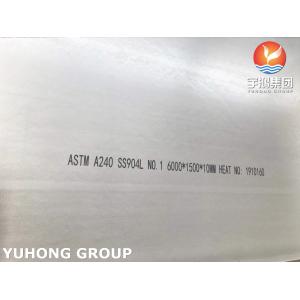

Add to Cart
Overview
Because the carbon content of 904L is very low (maximum 0.020%),
there will be no carbide precipitation under general heat treatment
and welding conditions. This eliminates the risk of intergranular
corrosion after general heat treatment and welding. Due to the high
content of chromium, nickel and molybdenum and the addition of
copper, 904L can be passivated even in reducing environment, such
as sulfuric acid and formic acid. The high nickel content makes it
have a lower corrosion rate in the active state. The corrosion
resistance of 904L is better than that of conventional stainless
steel.
904L steel has high resistance to pitting corrosion. In chloride
solution, its crack corrosion resistance is also very good. The
high nickel content of 904L reduces the corrosion rate at pits and
crevices. When the temperature of ordinary austenitic stainless
steel is higher than 60 ℃, it may be sensitive to stress corrosion
in a chloride-rich environment. This sensitivity can be reduced by
increasing the nickel content of stainless steel. Due to the high
nickel content, 904L has high resistance to stress corrosion
cracking in chloride solution, concentrated hydroxide solution and
hydrogen sulfide rich environment.
SS904L Chemical Composition
| Element | SS 904L |
| C | 0.020 max |
| Mn | 2 max |
| Si | 1 max |
| P | 0.040 max |
| S | 0.030 max |
| Cr | 19 – 23 |
| Ni | 23 – 28 |
| Mo | 4 – 5 |
| Cu | 1 – 2 |
SS904L Mechanical Properties
| Element | SS904L |
| Density | 7.95 g/cm3 |
| Melting Point | 1350 °C (2460 °F) |
| Tensile Strength | Psi – 71000 , MPa – 490 |
| Yield Strength (0.2%Offset) | Psi – 32000 , MPa – 220 |
| Elongation | 35% |
A240 SS904L Stainless Steel Plate Applications:
A240 SS904L Stainless Steel Plate Test Certificates:
Material Tests:
